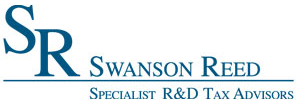Arizona Patent of the Month – January 2025
Vomaris Innovations, Inc. has introduced a groundbreaking bioelectric system designed to combat viral transmission through a reusable, electrically active mask insert. Unlike traditional filtration-based masks, this novel technology employs a multi-array matrix of biocompatible microcells that generate a low-level electric field (LLEF) or low-level electric current (LLEC), disrupting viral activity on contact.
The system consists of a planar substrate integrated with conductive microcell arrays that create a spontaneous voltaic reaction when hydrated with a conductive solution. This mechanism establishes microcurrents that actively neutralize viruses, providing an additional layer of antiviral protection beyond standard mask filtration. The insert can be securely attached to various face coverings, including surgical masks, gaiters, and respirators, making it a versatile and reusable solution.
A key advantage of this innovation is its sustainability. The insert is designed for repeated use, requiring only rehydration with a conductive solution to restore its antiviral properties. Unlike disposable masks that contribute to environmental waste, this bioelectric system offers an eco-friendly alternative without compromising safety.
Vomaris’ pioneering approach builds on the principle that electrical stimulation can influence biological processes, a concept that has been successfully applied in wound healing and infection control. By integrating this technology into personal protective equipment, the invention has the potential to redefine viral defense strategies, especially in healthcare and high-risk environments.
This advancement not only enhances protection for individuals but also represents a critical step forward in pandemic preparedness. As viral threats continue to evolve, innovative solutions like Vomaris’ bioelectric mask insert could become essential tools in mitigating future outbreaks, offering a sustainable and scientifically advanced method to reduce transmission risk.
Are you developing new technology for an existing application? Did you know your development work could be eligible for the R&D Tax Credit and you can receive up to 14% back on your expenses? Even if your development isn’t successful your work may still qualify for R&D credits (i.e. you don’t need to have a patent to qualify). To find out more, please contact a Swanson Reed R&D Specialist today or check out our free online eligibility test.
Who We Are:
Swanson Reed is one of the U.S.’ largest Specialist R&D tax advisory firms. We manage all facets of the R&D tax credit program, from claim preparation and audit compliance to claim disputes.
Swanson Reed regularly hosts free webinars and provides free IRS CE and CPE credits for CPAs. For more information please visit us at www.swansonreed.com/webinars or contact your usual Swanson Reed representative.






